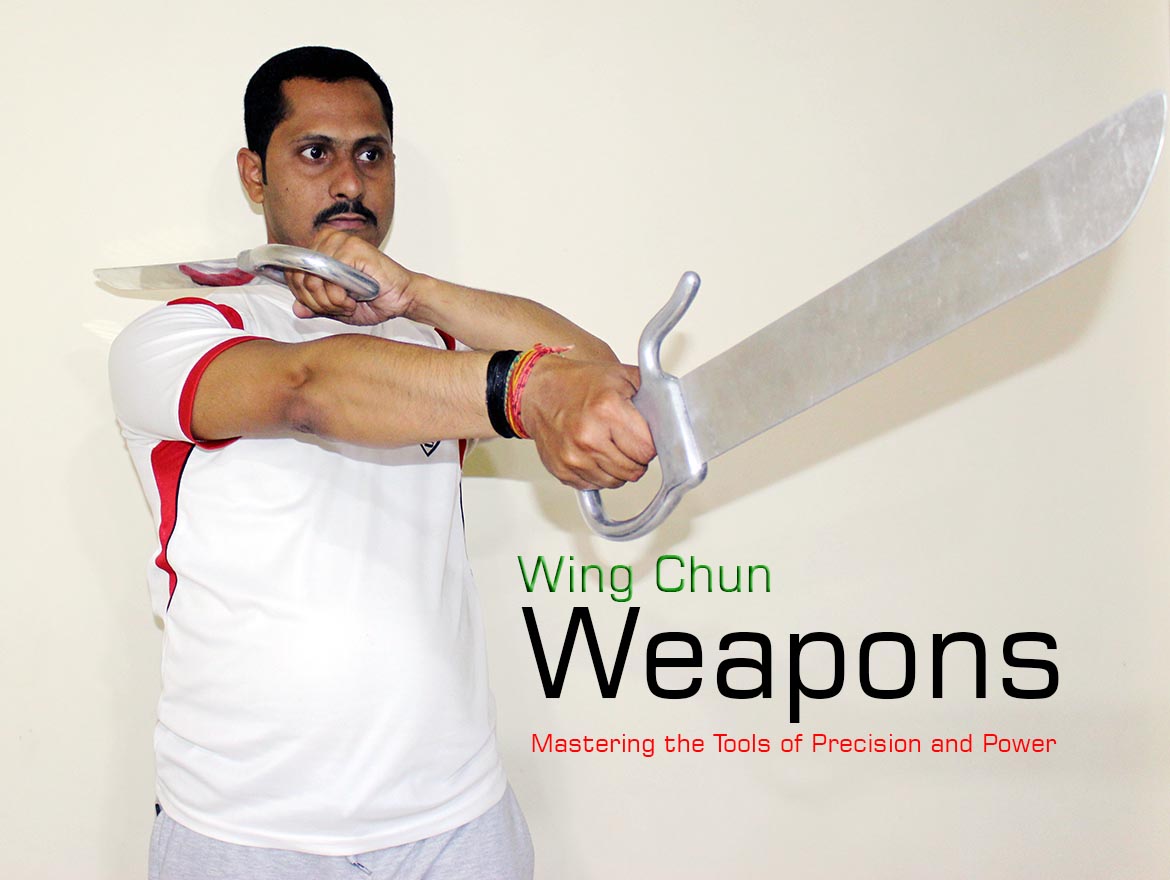Wing Chun is a Chinese martial art that is known for its emphasis on close-range combat, rapid strikes, and efficient movements. It’s a system built around practicality, and while its unarmed techniques, like the famous Tan Sau, Fook Sau, and Chain Punches, are the foundation of the style, Wing Chun also includes a set of traditional weapons that complement its philosophy and training methods. These weapons are not merely tools for combat but are extensions of the practitioner's body and mind, offering additional ways to refine technique, focus, and timing.
In this article, we’ll explore the four primary Wing Chun weapons, their significance, and how they contribute to the development of a Wing Chun practitioner.
The Baat Jaam Do, or "Butterfly Knives," are perhaps the most iconic Wing Chun weapons. These double-edged blades are short and relatively light, typically around 12-14 inches long, and are designed for swift and precise movements, rather than brute strength. The Baat Jaam Do are often used in pairs, and their main purpose is to enhance the practitioner’s ability to strike, deflect, and counter an opponent’s attacks.
Function and Techniques:
The Butterfly Knives are used in a variety of ways, including slashing, stabbing, and parrying. The main philosophy behind these knives is the same as the principles of Wing Chun: efficiency, speed, and directness. Practitioners use fluid, circular motions to control their opponent’s weapon or limbs, while simultaneously delivering quick strikes.
Key techniques include:
Cutting Motions: The knives are often swung in sharp, slicing movements to attack the opponent’s body or weapon.
Deflection and Redirection: The knives are used to deflect or parry incoming strikes, redirecting the opponent's energy while creating an opportunity to counter.
Close-range Strikes: The short length of the blades makes them highly effective for close-quarter combat, where Wing Chun excels.
The Baat Jaam Do also plays an important role in improving hand-eye coordination, timing, and distance control. Through the training of these knives, practitioners learn to apply the core principles of Wing Chun—such as the centerline theory and simultaneous attack and defense—in a weapons context.
The Luk Dim Boon Kwan, or "Six and a Half Point Pole," is another powerful weapon in Wing Chun’s arsenal. The staff is typically about 6 feet long and is known for its ability to strike with both offensive and defensive power. While it’s not as commonly seen in practice as the Butterfly Knives, it is a vital part of Wing Chun’s traditional training and a symbol of the art’s connection to long-range techniques.
Function and Techniques:
The staff is used for striking, blocking, and thrusting. The "six and a half points" refers to the way the pole is used: six points of contact and one half-point for the transition between moves. The length and versatility of the staff make it ideal for controlling space and striking from a distance, yet it still maintains the core Wing Chun principles of efficiency and simplicity.
Key techniques include:
• Thrusting and striking: The staff can be used for powerful thrusts to the body or strikes to the head or limbs, similar to the concept of "straight-line" attacks in unarmed Wing Chun.
• Defensive techniques: The staff can be rotated or swept to block incoming strikes, creating an effective defense while maintaining an offensive position.
• Intermediate range combat: Unlike the close-quarters focus of Wing Chun’s unarmed techniques, the staff allows the practitioner to handle situations that require greater distance control.
The training of the staff develops core attributes such as coordination, timing, balance, and spatial awareness. It also strengthens the lower body and improves overall stamina, as it requires the practitioner to maintain a stable stance while moving the staff fluidly.
Though not a traditional "weapon" in the same sense as the knives or pole, the Muk Yan Jong or "Wooden Dummy" is an essential tool in Wing Chun training. This stationary training apparatus mimics the human body and is used for practicing striking techniques, footwork, and timing.
Function and Techniques:
The Wooden Dummy is used to develop the precision of attacks, control over centerline positioning, and sensitivity to an opponent’s movements. By training on the Muk Yan Jong, practitioners can simulate close-quarters combat scenarios where the hands and feet are in constant motion, improving their reflexes and accuracy.
Key benefits of using the Wooden Dummy:
• Simulating realistic combat: The dummy provides a safe, controlled environment to practice techniques with full force, helping students improve their punching, trapping, and defensive techniques.
• Developing Precision: The fixed arms and legs of the dummy serve as targets to aim at, improving the practitioner’s targeting skills and accuracy..
• Building muscle Memory: Repetition of techniques on the Wooden Dummy helps the practitioner develop automatic responses, making their reactions more instinctual during real combat situations
Wing Chun weapons, including the Butterfly Knives, Six and a Half Point Pole, Long Pole, and Wooden Dummy, are integral elements of the Wing Chun martial art that complement its core principles of efficiency, directness, and simplicity. These weapons are not just tools for combat but are extensions of the practitioner’s body and mind. Through the study and application of these weapons, Wing Chun practitioners develop crucial skills such as coordination, timing, precision, and spatial awareness, all of which enhance their unarmed techniques.
While Wing Chun is often associated with its unarmed techniques, the addition of weapons training provides a deeper understanding of the martial art’s philosophy and broadens the practitioner’s capabilities. Each weapon carries its own set of challenges, yet they all reinforce the fundamental principles that make Wing Chun an effective and versatile martial art.
.
-Dr. Sonu Kumar Giri
Wing Chun Kung Fu Martial Arts Academy, Mumbai!
